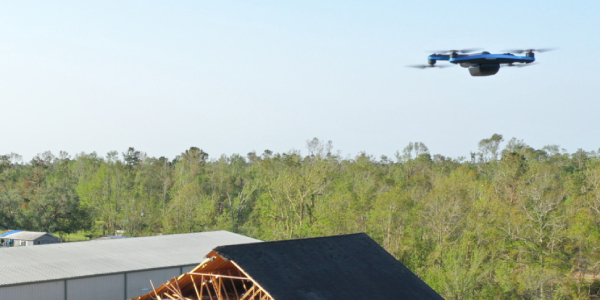UP TO THE MINUTE
How to incorporate drones into your business practices

By EagleView.
Drones are a popular technology in roofing for good reason. When used properly, drones can make operations more efficient and safer.
The experts at EagleView want to help you use drones to take your roofing into the future with their program EagleView Assess™. Drones are becoming more widely used in the industry; they can help with everything from safety initiatives to business operations and efficiency. However, because there are so many drone options on the market and the fact that you must get a license to operate them from the Federal Aviation Administration (FAA), it can be intimidating to want to incorporate drones into your business. Below are a few reasons to consider using drones.
Increase safety
Roofing is consistently named one of the most dangerous jobs in the US. Drones allow roofers to assess roofs from the safety of the ground—protecting themselves, residents and the structure itself. Using drones instead of physically inspecting roofs removes the need for ladders, scaffolds and fall protection, all of which rack up time to set up and costs. Drones also enable roofing businesses to reduce costs such as payroll related to inspection labor and insurance expenses as a result of improved safety practices.
Get more done faster
Additionally, drone usage allows roofers to obtain accurate data about a property from a number of angles — and easily share that data with the right parties. Assessing roofs can be done faster and with less expense than traditional, physical inspection processes.
Roofing businesses are leveraging drones to do more work faster at lower costs and with greater safety, but — as with any technology — it’s important to approach introducing it to your business with a well-thought-out plan. Take it from Tesson Roofing and Exteriors in St. Louis, Missouri — a company that worked with EagleView to ensure they introduced drones safely and professionally. Brett Tesson, President of the company explains: “If you’re going to embrace drones, it’s worth doing it right. That’s what makes a true professional. We use drones to help limit liability, but when drones are introduced incorrectly, you just open yourself up to a whole new area of liability. Drones are definitely the way of the future, so if you’re not properly licensed and insured, it’s not a matter of if there will be a problem — but when.”
Preparation for operating drones
In order to begin using drones in your business, the people who will be operating the drones need to pass the Part 107 Exam. This test is required by the Federal Aviation Administration and is designed to ensure that operators of drones for commercial use understand operating requirements, industry regulations and safety procedures. The good news is that 92% of those who take the test pass — boding well for roofing companies aiming to obtain drone licenses.
As an expert with access to a large network of professionals — all of whom have passed the test and hold their drone licenses — EagleView has some tips for passing the test:
- The majority of the test is made up of questions about Area I, II and V of the Airman Certification Standards, so make sure you study that content closely.
- Aircraft operations questions have historically comprised less than half of the test.
- Devote time to studying how to read airspace charts as many test-takers have reported this is the most challenging part of the exam.
- Make sure you cover these topics:
- Weather and how it affects aircraft operations
- Interpreting METAR and TAF reports
- Radio communications standards
- Aircraft maintenance
- Take free practice tests and/or classes.
- Check out this account of an EagleView employee’s experience studying for and passing the exam.
Not only is drone usage dramatically improving safety practices for roofing companies, but it’s also offering the opportunity to streamline sales, property insurance claims and production choices for roof repair and/or replacement.
Original article source: EagleView
Learn more about EagleView Assess in their Coffee Shop directory or visit www.eagleview.com.



















Comments
Leave a Reply
Have an account? Login to leave a comment!
Sign In